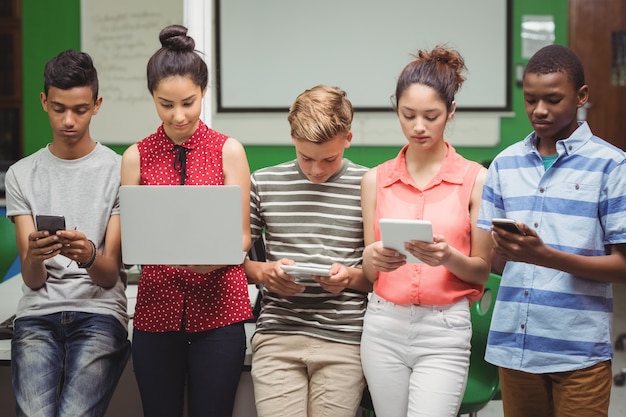School Voucher Legislation: Impact on Public Education in the US

New Legislation on School Vouchers: Understanding the Potential Impact on Public Education aims to provide families with financial assistance to enroll their children in private schools, sparking debate over its effects on public education quality and equity.
The introduction of New Legislation on School Vouchers: Understanding the Potential Impact on Public Education has ignited a nationwide discussion about the future of public education. These vouchers, essentially scholarships funded by public tax dollars, empower parents to choose private schools for their children, offering a potential escape from underperforming or overcrowded public institutions. But what are the long-term consequences of such a shift? Let’s delve into the nuances of this controversial policy change.
Understanding School Voucher Programs
School voucher programs are not a new concept, but their scope and impact are evolving rapidly. These programs, in essence, provide government funding that parents can use to pay for tuition at private schools. This can include religious schools, independent private schools, or even homeschooling expenses, depending on the specific legislation.
The core idea behind school vouchers is to give parents greater choice in their children’s education, especially those in underserved communities or those whose children attend struggling public schools.
Key Features of School Voucher Programs
School voucher programs typically share several common features, although the specifics can vary widely from state to state and even district to district.
Eligibility Criteria
Eligibility for school voucher programs is often based on factors such as income level, geographic location (specifically residing within a low-performing school district), or a child’s individual needs, such as having a disability.
- Income thresholds: Many programs target low-income families who may not otherwise be able to afford private school tuition.
- Geographic restrictions: Some programs are designed to help students in districts with consistently underperforming public schools.
- Special needs: Children with disabilities often receive priority for vouchers, as private schools may offer specialized programs tailored to their needs.
Funding Mechanisms
School voucher programs are generally funded by state or local tax dollars. The amount of the voucher can vary depending on the program, the student’s needs, and the cost of tuition at the chosen private school.
- Direct funding: Vouchers are typically issued directly to parents, who then endorse them to the private school.
- Tax credits: Some programs offer tax credits to individuals or corporations that donate to scholarship funds.
- Education savings accounts (ESAs): ESAs allow parents to use public funds for a wider range of educational expenses, including tutoring, online courses, and therapies.
In conclusion, school voucher programs can be a complex landscape. Understanding these key features is essential for grasping the potential impact of New Legislation on School Vouchers: Understanding the Potential Impact on Public Education.
The Rationale Behind Voucher Legislation
Proponents of school voucher legislation argue that these programs promote competition, improve educational outcomes, and empower parents to make the best choices for their children. These arguments center on several key points.
Advocates believe that vouchers offer a lifeline to students trapped in failing public schools. By providing financial assistance, vouchers enable these students to access potentially higher-quality private schools.
Parental Choice and Empowerment
One of the most compelling arguments for school vouchers is the idea of parental choice. Supporters argue that parents, not the government, should have the primary say in their children’s education.
Competition and School Improvement
Another key argument is that school vouchers promote competition among schools, forcing both public and private institutions to improve their offerings to attract and retain students.
- Increased accountability: Schools must demonstrate their value to parents to remain competitive.
- Innovation in education: Competition can drive schools to adopt new teaching methods and technologies.
- Improved resource allocation: Schools are incentivized to use resources more efficiently to maximize student outcomes.
Addressing Educational Inequity
Proponents also contend that vouchers can help level the playing field for disadvantaged students. By providing access to private schools, vouchers can offer opportunities to students who may not have them otherwise.
- Escape from failing schools: Vouchers offer a way out for students stuck in underperforming public schools.
- Access to specialized programs: Private schools may offer specialized programs tailored to the needs of students with disabilities or those who are gifted and talented.
- Breaking the cycle of poverty: By improving educational outcomes, vouchers can help students break free from the cycle of poverty.

The rationale behind school voucher legislation is deeply rooted in the principles of parental choice, competition, and educational equity. However, the potential negative impacts of New Legislation on School Vouchers: Understanding the Potential Impact on Public Education must be carefully considered.
Potential Impacts on Public Education
While school voucher programs are intended to benefit individual students and families, their potential effects on the broader public education system are a subject of intense debate. Critics argue that vouchers can drain resources from public schools, exacerbate existing inequalities, and undermine the principle of universal public education.
A major concern is that vouchers divert funding away from public schools, which already face budget constraints in many areas.
Financial Strain on Public Schools
When students leave public schools with vouchers, the funding allocated to those students often follows them to the private schools they attend. This can create a financial strain on public schools, particularly those with already limited resources.
Exacerbation of Inequalities
Critics also argue that vouchers can exacerbate existing inequalities within the education system. Private schools often have selective admissions policies, which can lead to the exclusion of students with disabilities, low academic performance, or other challenges.
- Cream-skimming: Private schools may select the most academically promising students, leaving public schools with a disproportionate share of students with greater needs.
- Limited accessibility: Private schools may not be accessible to all students due to factors such as transportation costs or lack of specialized programs.
- Reinforcement of segregation: Vouchers can exacerbate racial and socioeconomic segregation by allowing affluent families to opt out of diverse public schools.
Accountability and Oversight Concerns
Another concern is the lack of accountability and oversight in private schools that accept voucher students. Public schools are subject to a range of regulations and standards, while private schools often operate with greater autonomy.
- Lack of standardized testing: Private schools may not be required to administer the same standardized tests as public schools, making it difficult to compare student outcomes.
- Limited transparency: Private schools may not be subject to the same transparency requirements as public schools, making it harder for parents and the public to assess their performance.
- Potential for fraud and abuse: The lack of oversight can create opportunities for fraud and abuse in voucher programs.
Understanding the potential financial impact of New Legislation on School Vouchers: Understanding the Potential Impact on Public Education is critical for policymakers, educators, and parents alike.

Legal and Constitutional Challenges
School voucher programs have faced numerous legal and constitutional challenges over the years. These challenges often center on issues related to the separation of church and state, equal protection, and state constitutional provisions regarding education.
One of the most frequently litigated issues is whether voucher programs that include religious schools violate the Establishment Clause of the First Amendment to the U.S. Constitution.
Establishment Clause Concerns
The Establishment Clause prohibits the government from establishing or endorsing a religion. Opponents of school vouchers argue that providing public funds to religious schools through voucher programs violates this clause.
Equal Protection Arguments
Another area of legal contention involves the Equal Protection Clause of the Fourteenth Amendment, which prohibits states from denying any person within their jurisdiction the equal protection of the laws.
State Constitutional Provisions
In addition to federal constitutional challenges, school voucher programs have also faced challenges under state constitutions. Many state constitutions include provisions that specifically address education and the use of public funds for private purposes.
- Blaine Amendments: Many states have Blaine Amendments, which prohibit the use of public funds to support religious schools or institutions.
- Adequate education clauses: Some state constitutions include clauses that require the state to provide an adequate education to all students. Opponents of vouchers argue that these programs undermine this obligation by diverting resources from public schools.
- Uniformity clauses: Some state constitutions require that public schools be uniform throughout the state. Opponents argue that vouchers create disparities in educational opportunities by allowing students to attend private schools with different standards and resources.
Legal and constitutional challenges will likely continue to shape the landscape of school voucher programs. The future of New Legislation on School Vouchers: Understanding the Potential Impact on Public Education may depend on the outcome of these court battles.
The Role of Community and Parental Involvement
The success of any educational initiative, including school voucher programs, hinges on the active involvement of the community and parents. When parents and community members are engaged in the educational process, students are more likely to thrive, and schools are better equipped to meet their needs.
Parental involvement is a key predictor of student success. When parents are actively involved in their children’s education, students tend to have higher grades, better attendance, and greater motivation.
Community Support and Resources
In addition to parental involvement, community support and resources play a critical role in the success of schools and students. Schools that are well-integrated into their communities and have access to local resources are better positioned to provide a comprehensive education.
- Partnerships with local businesses: Businesses can provide internships, mentorships, and financial support to schools and students.
- Volunteer programs: Community members can volunteer their time and expertise to support schools and students.
- Access to social services: Schools can partner with local social service agencies to provide students and families with access to healthcare, counseling, and other essential services.
Addressing Unique Student Needs
Effective parental and community involvement can also help schools better understand and address the unique needs of their students. By working closely with parents and community members, schools can identify challenges and develop targeted interventions.
- Cultural competence: Engaging with parents and community members from diverse backgrounds can help schools develop culturally competent programs and practices.
- Early intervention: Parents and community members can help identify students who are struggling academically or emotionally and connect them with appropriate support services.
- Individualized education plans (IEPs): Parents play a crucial role in the development and implementation of IEPs for students with disabilities.
The active participation of parents and community members is vital for maximizing the positive effects of New Legislation on School Vouchers: Understanding the Potential Impact on Public Education.
Alternative Approaches to School Improvement
While school voucher programs are one approach to improving education, there are numerous other strategies that policymakers, educators, and communities can pursue. These alternative approaches often focus on strengthening public schools, addressing systemic inequities, and promoting innovation in education.
One common strategy is to increase funding for public schools, particularly those in underserved communities. Adequate funding can allow schools to hire more teachers, reduce class sizes, and provide students with access to essential resources.
Investing in Teacher Development
Teachers are the most important factor in student success. Investing in teacher development through high-quality training, mentorship programs, and ongoing professional development can significantly improve teaching quality and student outcomes.
Targeted Interventions and Support
Another approach is to implement targeted interventions and support for students who are struggling academically or emotionally. These interventions can include tutoring, mentoring, counseling, and other specialized services.
- Early childhood education: Investing in early childhood education programs can give students a strong start and reduce the achievement gap.
- Summer learning programs: Summer learning programs can help students catch up on missed learning and prevent summer slide.
- Dropout prevention programs: Dropout prevention programs can help keep students engaged in school and on track to graduate.
Promoting Innovation and Best Practices
Innovation and best practices in education can transform teaching and learning. Encouraging schools to experiment with new approaches and share successful strategies can lead to significant improvements in student outcomes.
- Personalized learning: Personalized learning tailors instruction to the individual needs and interests of each student.
- Project-based learning: Project-based learning engages students in real-world projects that require them to apply their knowledge and skills.
- Technology integration: Technology can be used to enhance teaching and learning in a variety of ways, such as providing access to online resources, facilitating collaboration, and personalizing instruction.
Exploring alternative approaches is essential for creating a high-quality education system that serves all students effectively. A balanced strategy is needed to assess the full impact of New Legislation on School Vouchers: Understanding the Potential Impact on Public Education.
| Key Point | Brief Description |
|---|---|
| 🏫 School Vouchers | Government funding for parents to use on private school tuition. |
| 💰 Funding Impact | Vouchers can affect public school budgets as funds follow the student. |
| ⚖️ Legal Challenges | Concerns about separation of church and state within the Establishment Clause. |
| 👪 Parental Choice | Vouchers empower parents to choose schools that best fit their child’s needs. |
Frequently Asked Questions
▼
School vouchers are government-funded scholarships that allow parents to send their children to private schools, covering tuition fees and related educational expenses.
▼
Eligibility varies by state but often targets low-income families, students in underperforming districts, or children with special educational needs.
▼
Vouchers can reduce public school funding as students transfer, potentially affecting resources and educational quality for remaining students.
▼
The legality of vouchers has been challenged, particularly regarding the separation of church and state when used in religious private schools.
▼
Alternatives include increased public school funding, teacher development programs, and targeted academic interventions to improve educational outcomes.
Conclusion
New Legislation on School Vouchers: Understanding the Potential Impact on Public Education presents a multifaceted issue with both promising benefits and concerning drawbacks. As communities grapple with these changes, it is crucial to consider a wide spectrum of viewpoints and prioritize solutions that foster both equity and quality in education.





